 |
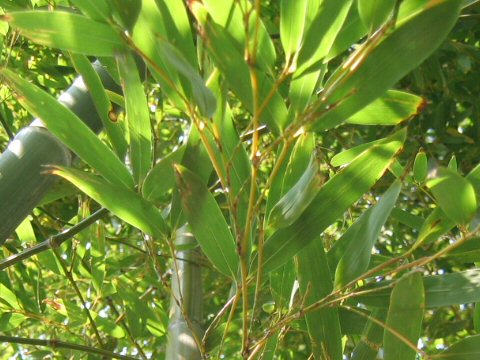

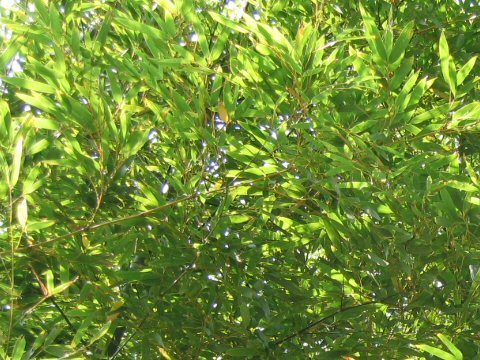

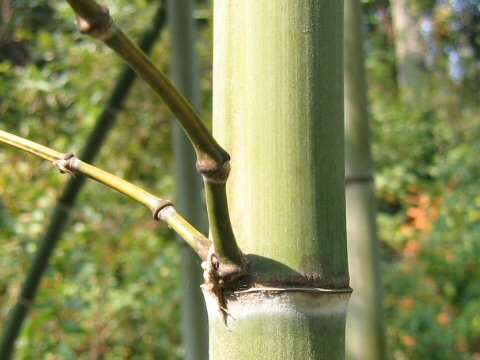

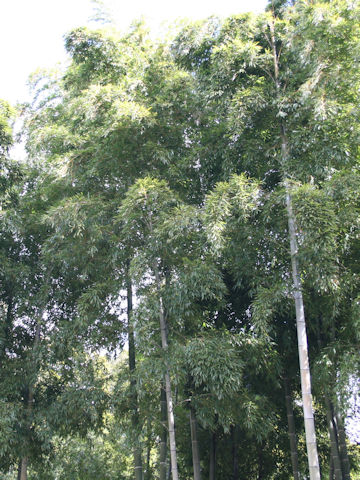

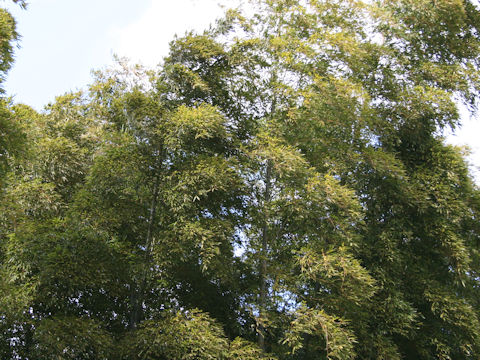

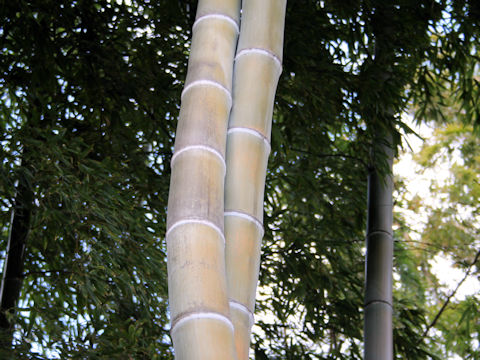

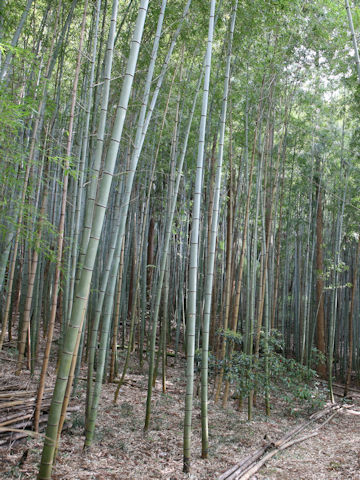

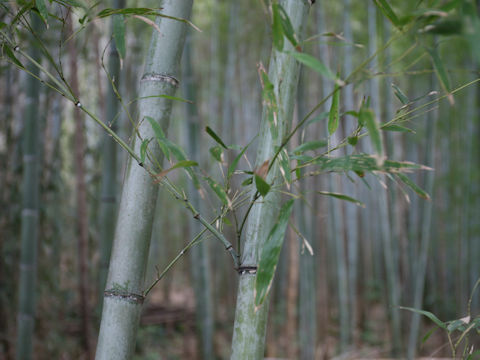

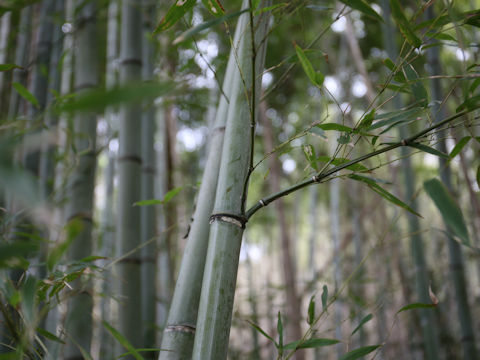

|

|
中国の江南地方が原産です。わが国へは江戸時代の中頃に渡来しました。現在では各地に植栽されています。わが国に生えるタケ類の中では最も大きくなり、高さは15〜20メートルになります。この高さになるまでに1か月、そして2か月目には成長を終えます。群生して竹薮を形成し、春のタケノコは食用にされます。節間は20〜25センチと短く、節から枝を2個ずつだします。名前は、中国で昔、病気の母のために真冬に雪をかき分けてタケノコを掘り、それを食べさせたという「孟宗(Meng Zong)」という人の故事に因みます。
|

|
イネ科マダケ属の常緑タケ類で、学名は Phyllostachys pubescens。英名はありません。
|

|
The "Moso-chiku" (Phyllostachys pubescens) belongs to Poaceae (the Grass family). It is an evergreen bamboo that is native to the Jiangnan region ( immediately south of the lower reaches of the Yangtze River) of China. This bamboo came to Japan in the middle of the Edo period (1603-1868). It is now planted in various places. It is the largest bamboo species that grows in Japan, with a height of 15 to 20 m. It will reach this height in one month and in the second month it will finish growing. They grow in clusters to form bamboo grove, and spring bamboo shoots are edible. The internodes are as short as 20 to 25 cm, and two branches are taken out from the nodes. The name comes from a man named "Meng Zong" who used to dig up bamboo shoots in the middle of winter for his sick mother and feed them.
|

|
[上・中1〜2] 愛知県名古屋市千種区「東山植物園」にて、2004年11月21日撮影。
[中3〜中5] 京都市西京区「洛西竹林公園」にて、2006年02月10日撮影。
[中6〜7・下] 宮城県仙台市太白区「中ノ森」にて、2021年04月19日撮影。
|










